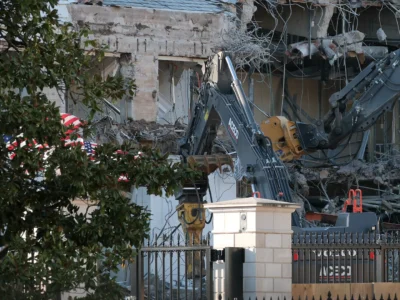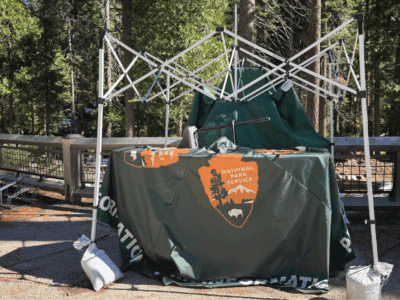Unexpected Environmental Heroes
Mammoth Lakes is one of the more popular resort areas in California’s Sierra Nevada, and also one of the more beautiful. It’s popular in part because it as at one of the low points in the Sierra Nevada, allowing for relatively easy backcountry access to both the east and west sides of the mountains. (That is one of the reasons I am here right now!) While much of the Sierra has rugged peaks between 11,000 and 14,000 feet high, here at Mammoth, the crest of the Sierra is about 9,000 to 10,000 feet and has relatively rolling terrain that connects to the San Joaquin River valley on the west side.
Yet despite the relatively friendly terrain, there is no road crossing the Sierra east-to-west from Mammoth. If you want to do that, you have to go either south to the vicinity of Techahapi Pass or north to Yosemite. And for six months of the year, when the road through Yosemite is closed for winter, you have to go north to Lake Tahoe. Yet the low point in the range once was a major trans-Sierra route for miners and travelers, with its own post road, the French Trail. That road served Mammoth Lakes when it was a mining boom town, but after the boom went bust, it was eventually abandoned. Today, the area west of Mammoth on the Sierra crest is a major recreational area, with a (very narrow) road that goes just over the crest to Devil’s Postpile National Monument. That road provides access to the Pacific Crest Trail and John Muir Trail, campgrounds, a small horse ranch resort, and the very beautiful Minaret Range. But there is no trans-Sierra highway, and the land west of Mammoth is protected in the Ansel Adams and John Muir wilderness areas.

Given the major road gap, and the good terrain, why hasn’t a road been built here, even during the 1950s and 1960s, the go-go years for highway construction? Indeed, in the late 1960s, the Forest Service and Caltrans (the state highway department) began the initial stages of construction for a major highway across the Sierra here. They were stopped by local conservationists and major lobbying from a senior state political figure. Who was that figure? The answer after the jump.

Ronald Reagan, who at the time was governor of California, helped stop the highway. Here is an excerpt from a column in the Los Angeles Times in which an experienced political reporter reminisced about the fight:
I still have this image of Reagan waving a white hat, on a tall horse, suddenly trotting through a pack station–then bounding over boulders into the High Sierra as staffers and reporters struggled to mount and hang on to some strange beast.
That was 25 years ago this summer. Gov. Reagan was off to protect the Minaret Summit south of Yosemite–and the spectacular John Muir Trail–from highway builders. In fact, Caltrans surveyors were there when Reagan arrived. The feds were about to put contracts out to bid.
A high-speed, trans-Sierra highway between the John Muir and Minarets wilderness areas long had been the dream of Central Valley interests.
But Reagan had the wisdom to appoint a former Sierra packer, Ike Livermore, as his resources secretary. Livermore’s mission in life was to protect the environment and he had great influence on the governor, an outdoors lover himself.
Reagan was apparently motivated by the important recreational and conservation benefits of the land around Mammoth Lakes and Devil’s Postpile, and believed they far outweighed any benefits from the road.
The columnist then goes on to describe how he believes Reagan was central to the creation of the bi-state agency that protects Lake Tahoe (as Rick noted here, Nevada is now threatening to leave the compact) and in stopping a number of proposed dams.
There’s a lot not to like about Reagan’s environmental legacy, such as James Watt. But this episode is important for all of us to remember that there are rarely pure villains or heroes in any policy story, and environmental policy is no exception. Even in times like this, with extreme political polarization, I think the story of Reagan and the trans-Sierra highway at Mammoth helps remind us of that the stories are often more complicated, and that real success in environmental policy will often require understanding more about the people we perceive as opponents and what motivates them.
Reader Comments
One Reply to “Unexpected Environmental Heroes”
Comments are closed.






Reagan also signed the bill that created the Air Resources Board. This is a great article and an important message. Most, if not all, good policy meets somewhere in the middle of two disparate positions.